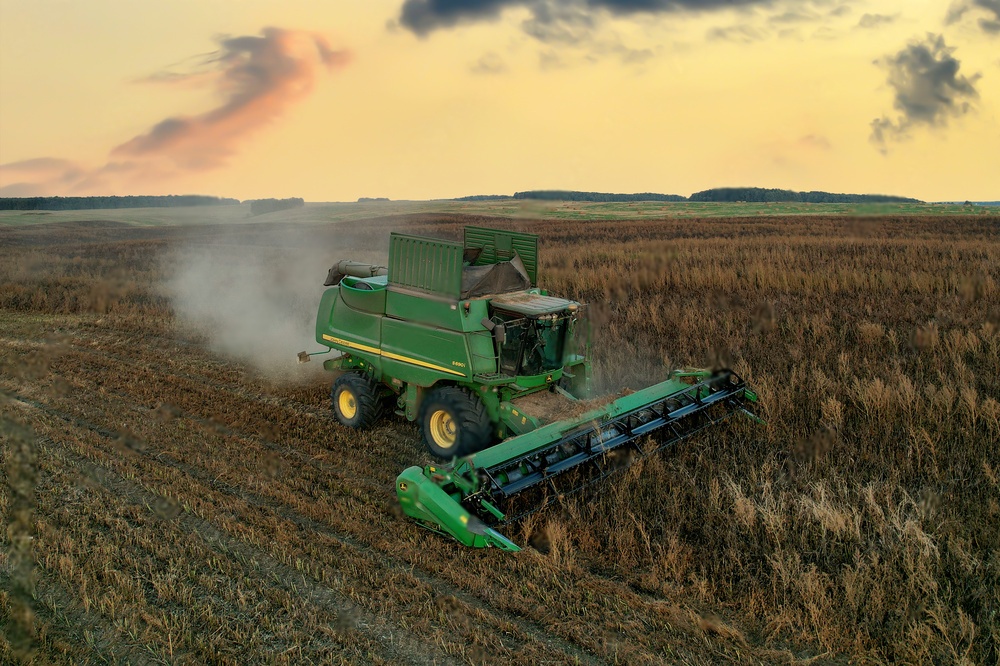From Humble Beginnings to High-Tech Feast: The Farm Combine’s Epic Journey
The vast golden stretches of wheat fields, the rolling green waves of corn, or the endless rows of soybeans – these are all iconic sights that wouldn’t be possible without the tireless workhorses of agriculture: farm combines. These magnificent machines have revolutionized harvesting, transforming a once labor-intensive process into an efficient and productive operation. But the journey of the farm combine, from its humble beginnings to the modern marvel it is today, is a fascinating tale of innovation and human ingenuity.
From Reaping by Hand to Mechanical Marvels
For millennia, harvesting crops involved backbreaking manual labor. Farmers would use sickles or scythes to cut grain stalks, gather them by hand, and then thresh them – a process of separating the grain from the stalk – using a flail or by trampling them with animals. This arduous and time-consuming process limited crop yields and placed a heavy burden on farmers.
The first significant innovation came in the 18th century with the invention of mechanical reapers. These horse-drawn machines significantly reduced the time and labor required for cutting crops. However, threshing remained a separate operation. The turning point arrived in the mid-19th century with the introduction of the combine harvester.
The Birth of the Combine Harvester
The concept of a machine that could both reap and thresh crops simultaneously emerged in the 1820s. Early combine harvesters were complex and often unreliable, but inventors continued to refine the technology. By the late 19th century, advancements in engine power and machine design led to the development of more practical and efficient combine harvesters.
These early combines were primarily self-propelled machines, meaning they had their own engines. However, they were still large and cumbersome, requiring wide fields for operation. The invention of the tractor in the early 20th century revolutionized combine harvesters yet again. Farmers could now use tractors to pull smaller, more maneuverable combines, allowing for harvesting in a wider variety of field sizes and conditions.
The Evolution of the Modern Combine
The 20th century saw a rapid evolution of the farm combine. The introduction of hydraulics improved control and efficiency, while innovations like rubber tires allowed for better mobility and reduced field compaction. Combine headers, the attachments that cut the crops, became more sophisticated, with options for different crop types and varying row spacings.
The latter half of the 20th century witnessed the rise of automation and computerization in farm combines. Sensor technology allowed for automatic adjustments based on crop conditions, and on-board computers facilitated real-time monitoring and data collection. Today’s modern combines are marvels of engineering, boasting features like self-leveling capabilities, GPS guidance for precise harvesting lines, and grain yield monitors that help farmers optimize their harvest.
The Impact of the Farm Combine
The invention of the farm combine has had a profound impact on agriculture. It has dramatically increased harvesting efficiency, allowing farmers to harvest larger areas in less time. This has led to significant increases in crop yields, contributing to global food security. Additionally, the reduced labor requirements associated with combine harvesters have freed up farmers to focus on other aspects of their operations, such as crop management and farm planning.
The Future of Farm Combines
The future of farm combines promises even greater advancements. Research and development are ongoing in areas like artificial intelligence (AI) for automated threshing adjustments, advanced sensor technology for real-time crop analysis, and even the potential for autonomous harvesting systems. As these innovations come to fruition, farm combines will continue to play a vital role in ensuring a sustainable and productive future for agriculture.
From its humble beginnings as a concept to a modern marvel of agricultural technology, the farm combine stands as a testament to human ingenuity. It is a machine that has transformed the way we harvest our food, contributing to a more efficient and productive agricultural sector that feeds the world.



